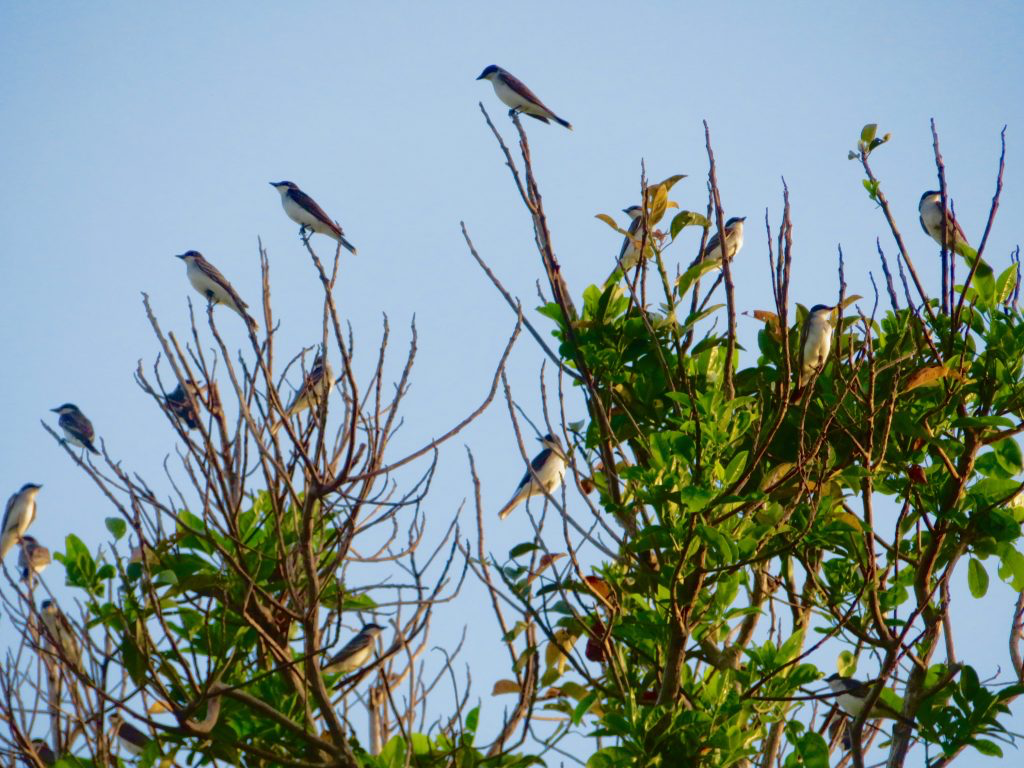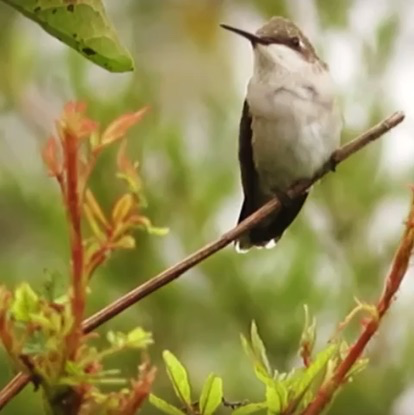Published October-09-2019
Fate to the winds: Fall Migration at Tranquilo
Fall is upon us again, as the birds from our temperate northern latitudes of United States and Canada fly south for the winter to spend the long months (and thus, the majority of the year) in the tropics. A combination …

Stacey

Fall is upon us again, as the birds from our temperate northern latitudes of United States and Canada fly south for the winter to spend the long months (and thus, the majority of the year) in the tropics. A combination of photoperiod, the tilt of the earth, genetic predisposition, temperature and food availability determines this period of mass departure.

Hooded Warbler, Florida, Fall 2019
After a short spring and summer packed with staking out new territories (or returning to ones claimed in previous years as is the case with various warblers that return to the same nesting territory year after year), the birds find a mate, build nests and raise the next generation of migratory birds. These hatch-year birds, upon fledging, join the southward-flowing river of migrant songbirds, waterfowl and raptors to wintering grounds they’ve never seen before, yet once occupied by their ancestors.

Eastern Kingbirds pausing in the treetops off Tranquilo Bay’s deck. October 2019
The birds funnel down the vast continent of North America where they finished out the breeding season to the narrow stretch of Central America, some residing here for the winter while others continue to fly as far as South America.

Ruby-throated Hummingbird, Maryland Fall 2019
So why would a bird care to make such a journey? Throwing its fate to the wind and relying on abundant yet sometimes uncertain resources that provide a bird’s fat stores to fuel the tiny little muscles that can project a tiny sprite across wide open seas, country borders and continental divides?
Well, a combination of factors: the lush tropics burgeon with fruits, seeds, and invertebrates that become unavailable up north after the fall harvest is over and the cold sets in. The plentiful supply of food in the tropical south allows for our temperate nesting birds to feed shoulder to shoulder with toucans, trogons, honeycreepers and others that make up the vast array of Central and South American species of the avian persuasion.
The tanagers are headed this way! Florida, Fall 2019
This is an exciting time, not just for birders but anyone interested in nature– it’s hard not to get drawn in by the wildly impressive spectacle of such a mass migration!
Have you noticed changes in the birds around your home? What’s it like where you life? Who stays and who goes?
Black Tern feeding
Black Terns refueling at the mouth of the Changuinola along their journey south. Snyder/Changuinola Bay Excursion, Tranquilo Bay
